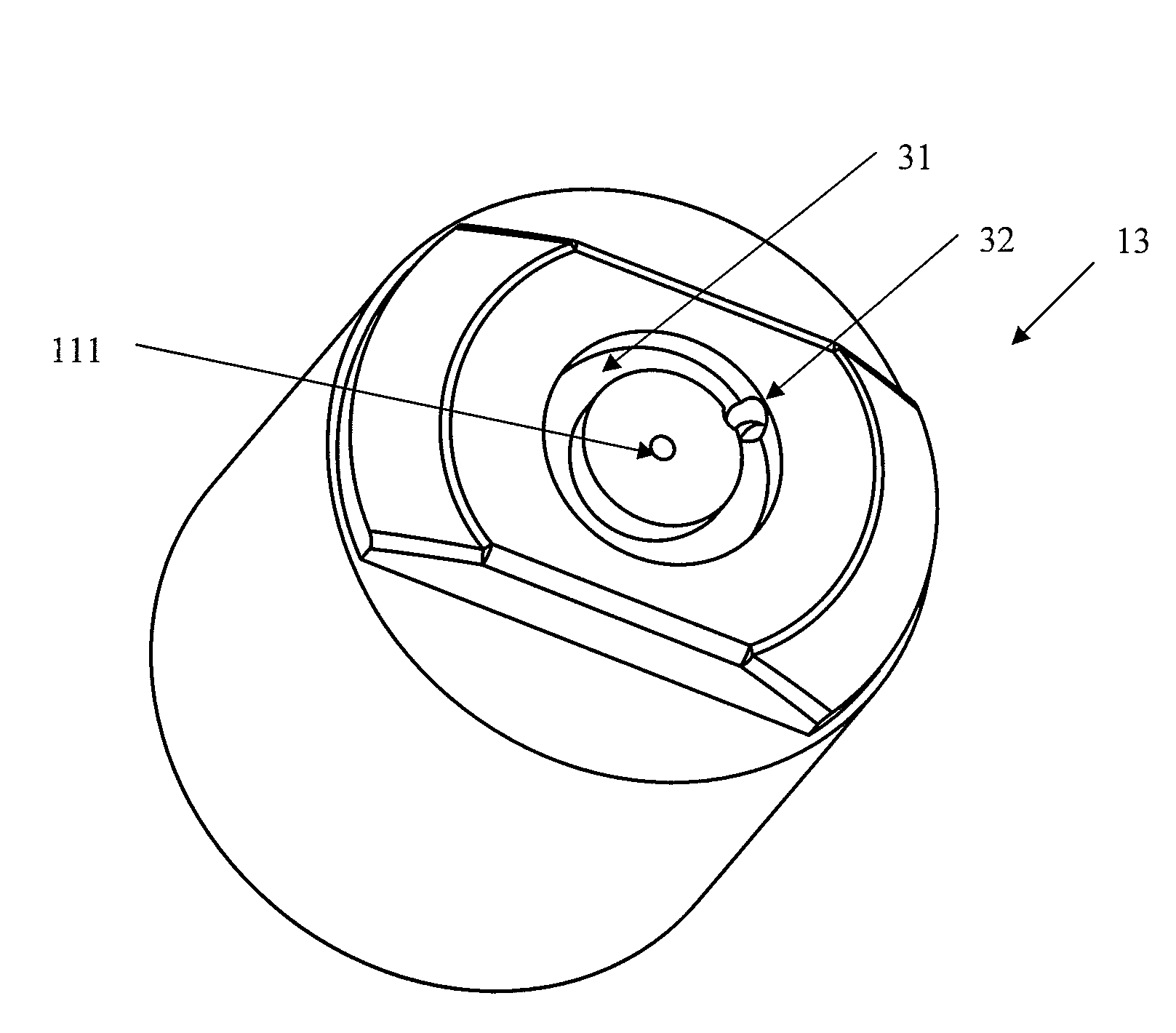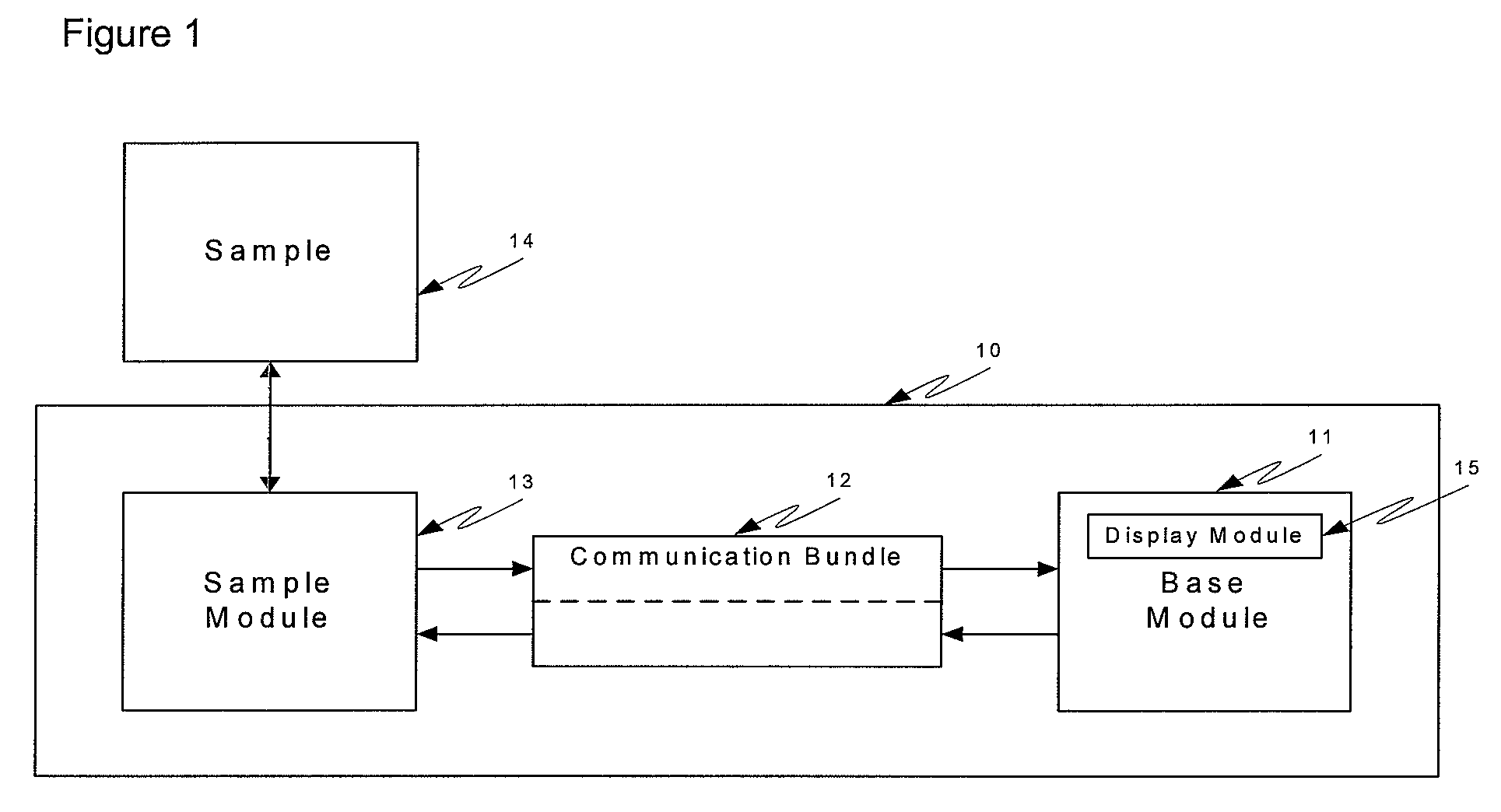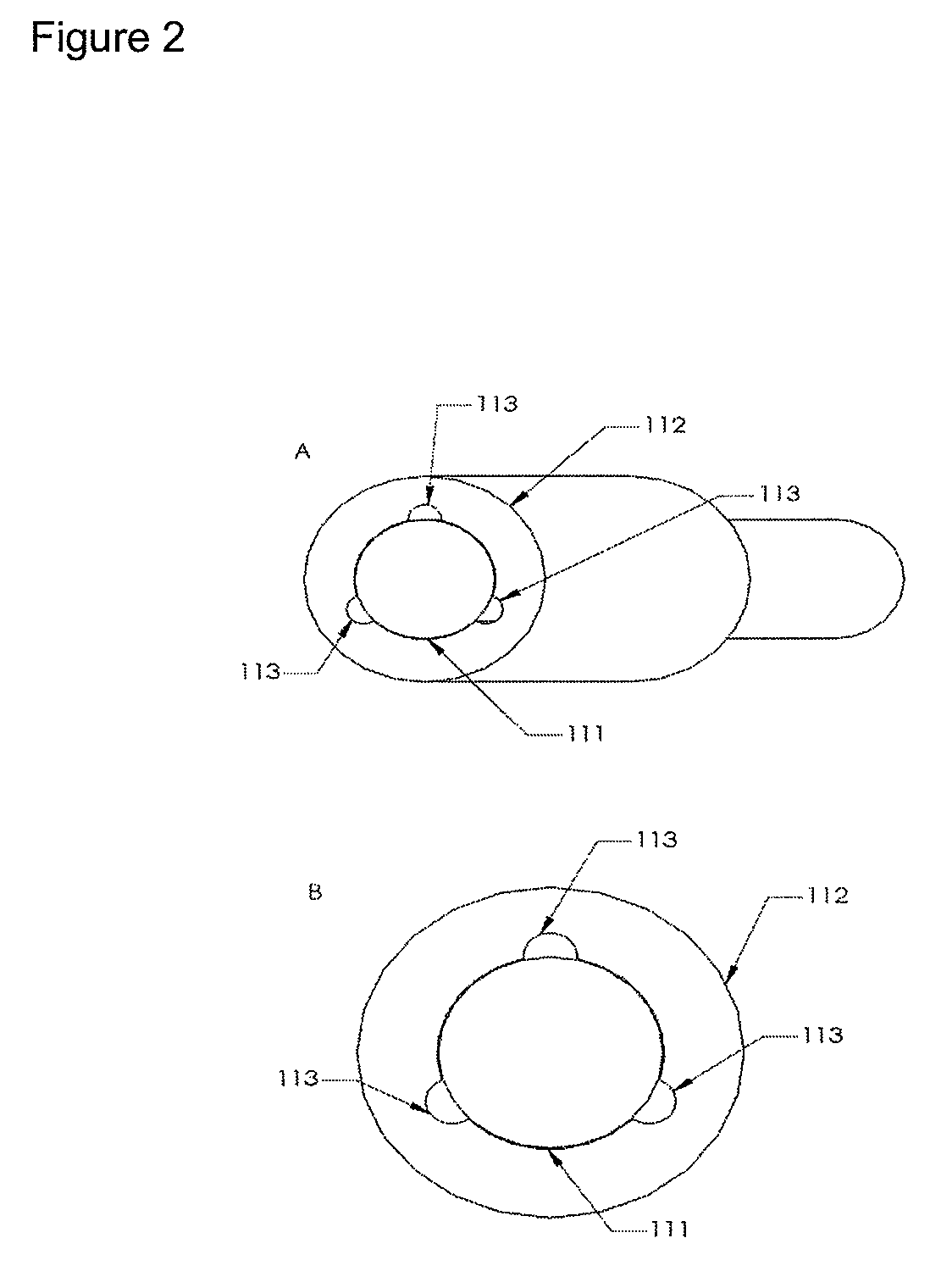Method and apparatus for coupling a channeled sample probe to tissue
a channeled sample and tissue technology, applied in the field of spectroscopy-based non-invasive biological parameters measurement, can solve the problems of current monitoring techniques that discourage regular use, abnormal production and use of insulin, and unsuitable chlorofluorocarbon preparations for living tissue use, etc., to achieve the effect of minimizing sampling errors and improving the performance of optical analyzers
- Summary
- Abstract
- Description
- Claims
- Application Information
AI Technical Summary
Benefits of technology
Problems solved by technology
Method used
Image
Examples
example i
[0172]Referring now to FIG. 5, a block diagram of an automated coupling fluid delivery system is provided. A coupling fluid is held in a reservoir 101. This reservoir contains the fluid in a package that allows for ready transport, protection from contaminants, and on-time delivery. Fluid is forced from the reservoir by driving means 102 to force coupling fluid through tubing 107 to the sample site 14.
[0173]Referring now to FIG. 6, optional power supplies 104 are used for powering the driving means 102 and include gravity and / or manual, alternating current, or direct current power. Often, the driving forces required tax a power budget. An optional potential energy assist 105 is provided to minimize auxiliary power requirements. Examples of a potential energy source 105 include a coiled spring or compressed gas, infra.
[0174]Optional software 106 is used to control coupling fluid delivery. The software is preferably tied into a larger data acquisition system of an analyzer, such as a ...
example ii
[0175]In a second example, coupling fluid is delivered through tubing to a sample site. After delivery the coupling fluid is backed off from the end of the tubing exit, such as by capillary action or by reversing a pushing force into a pulling force. For example, a motor pushing the fluid is reversed and the fluid is pulled back a distance into the tubing. A sensor is optionally placed across the tubing to determine the position of the meniscus of the coupling fluid in the tubing. For example, a light source, such as a light emitting diode, shines through the tubing and is sensed by a detector. As first air and then coupling fluid is moved past the sensor in the tubing, a change in light intensity is indicative of the meniscus and hence the position of the coupling fluid in the tubing. The dead volume of tubing past the detector is readily calculated. The driving means 102, such as a stepper motor, are then used to deliver the dead volume of coupling fluid plus the desired volume of...
example iii
[0176]In a third example, a series of optical readings are collected by the analyzer. As the sample probe is brought into proximity to the sample site 14, the near-infrared reading changes. Features of the signal are indicative of the distance between the tip of the sample probe and the sample site. For example, the collected intensity at wavelengths of high absorbance decrease toward zero as the tip of the sample probe approaches a tissue sample. An example of a high absorbance feature is water at or about 1450 nm, 1900 nm, and / or 2600 nm. Correlation between intensity readings at one or more wavelengths and distance between the tip of the sample probe are used to provide feedback to the user or preferably to a z-axis moveable sample probe. The feedback allows the controller to move the sample probe relative to the tissue sample site. This allows, for example, controlling the probe to make contact with the sample, for the sample probe to be backed off from the sample, for a couplin...
PUM
 Login to View More
Login to View More Abstract
Description
Claims
Application Information
 Login to View More
Login to View More - R&D
- Intellectual Property
- Life Sciences
- Materials
- Tech Scout
- Unparalleled Data Quality
- Higher Quality Content
- 60% Fewer Hallucinations
Browse by: Latest US Patents, China's latest patents, Technical Efficacy Thesaurus, Application Domain, Technology Topic, Popular Technical Reports.
© 2025 PatSnap. All rights reserved.Legal|Privacy policy|Modern Slavery Act Transparency Statement|Sitemap|About US| Contact US: help@patsnap.com



